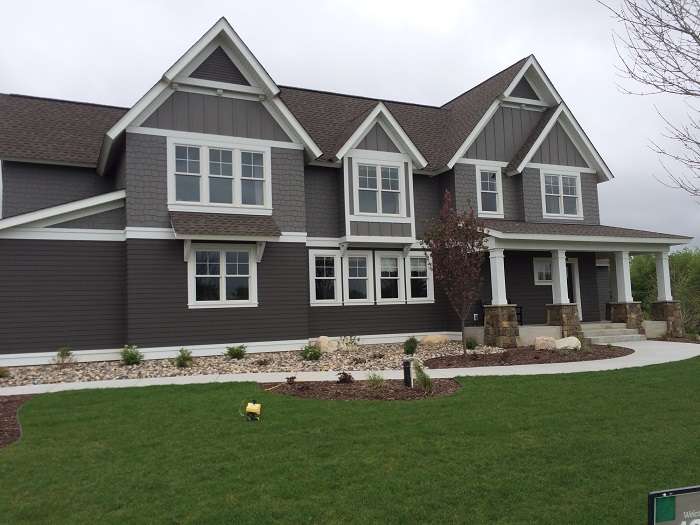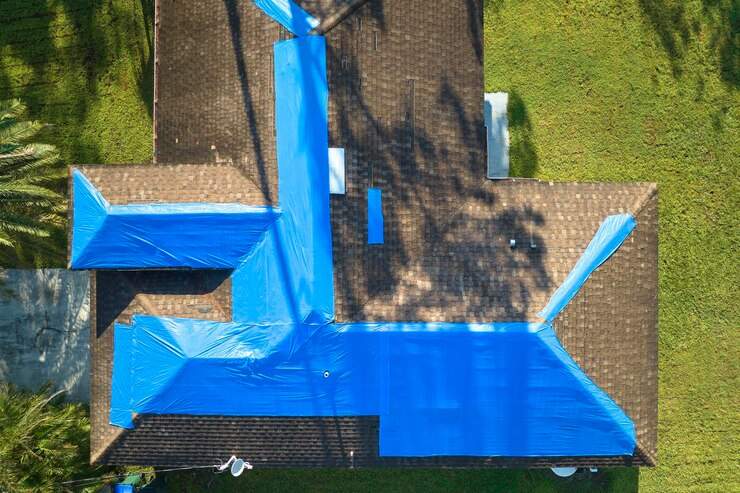If you’re considering a new roof for your home in the Twin Cities, you’ve likely come across the term composition roofing.
But what exactly is a composition roof, and is it a good choice for Minnesota’s unique climate?
Whether you live in Minneapolis, St. Paul, or surrounding suburbs like Edina, Maple Grove, or Woodbury, understanding your roofing options is key to protecting your home from harsh weather conditions.
In this guide, we’ll break down what a composition roof is, the benefits it offers, and why it’s a popular choice for homes in the Twin Cities.
Key Takeaways
- A composition roof is made from fiberglass, asphalt, and minerals, offering durability, affordability, and style options.
- Twin Cities homeowners choose composition roofs because they withstand snow, ice, hail, strong winds, and summer heat.
- These roofs cost less than metal or cedar while lasting 20 to 50 years, depending on quality.
- Composition shingles require little maintenance, and damaged ones can be replaced without redoing the entire roof.
- Many composition shingles reflect sunlight and, with proper ventilation, help prevent ice dams during Minnesota winters.
What Is a Composition Roof?
A composition roof is a type of roofing made from a blend of materials—typically fiberglass, asphalt, and mineral granules. Unlike traditional wood or slate shingles, composition shingles are engineered to be more durable, cost-effective, and versatile.
These roofs are sometimes called asphalt shingle roofs because the most common type of composition shingle is made with an asphalt base. However, not all composition roofs are the same.
They come in three main varieties:
- 3-Tab Shingles – The most budget-friendly option, featuring a flat, uniform appearance.
- Architectural Shingles – Thicker and more durable, offering a dimensional look that mimics wood or slate.
- Luxury Shingles – High-end, premium shingles designed for enhanced durability and aesthetics.
Each type has its advantages, and the right choice depends on your budget, style preferences, and long-term roofing goals.
Why Are Composition Roofs Popular in the Twin Cities?
Minnesota’s cold winters, hot summers, and severe storms make roofing durability a top priority. Here’s why many Twin Cities homeowners choose composition roofing:
1. Durability Against Harsh Weather
Winters in the Twin Cities bring heavy snowfall, ice dams, and freezing temperatures, while summers can be hot and humid. Composition shingles are designed to withstand:
- Freeze-thaw cycles that can cause cracking in less flexible materials.
- Hail impact resistance, especially with architectural or luxury shingles.
- Wind resistance up to 130 mph, which is crucial for storms rolling through the area.
2. Affordability Without Sacrificing Quality
Compared to materials like metal or cedar shake, composition shingles offer a great balance of price and performance.
Many homeowners in cities like Bloomington and Eagan choose them because they provide a long lifespan (20-50 years, depending on quality) at a reasonable cost.
3. Low Maintenance & Easy Repairs
Unlike wood shakes that require sealing or metal roofs that can dent, composition shingles need minimal upkeep.
If a few shingles are damaged in a storm, they can be easily replaced without redoing the entire roof—perfect for storm-prone areas like Eden Prairie and Plymouth.
4. Wide Range of Colors & Styles
From classic black and gray tones to earthier hues like brown and green, composition shingles come in many colors that can complement any home style—whether you have a traditional bungalow in St. Paul’s Macalester-Groveland neighborhood or a modern build in Northeast Minneapolis.
5. Energy Efficiency & Ventilation
Many high-quality composition shingles today are designed with cool-roof technology, reflecting sunlight to keep homes cooler in summer.
Paired with proper attic ventilation, they help reduce ice dam formation in winter, a common issue for homes in places like Minnetonka and White Bear Lake.
How Long Does a Composition Roof Last in Minnesota?
The lifespan of a composition roof depends on factors like material quality, maintenance, and weather exposure. Here’s a general guideline:
- 3-Tab Shingles: 20-25 years
- Architectural Shingles: 30-40 years
- Luxury Shingles: 40-50+ years
Given Minnesota’s extreme weather, investing in impact-resistant, high-quality shingles can extend the life of your roof and minimize storm damage.
Is a Composition Roof Right for Your Twin Cities Home?
If you’re looking for an affordable, durable, and stylish roofing option that holds up against Minnesota’s challenging climate, a composition roof is a great choice.
However, selecting the right type of shingle and ensuring proper installation is key to maximizing its lifespan and performance.
That’s where professional roofing expertise comes in.
At Allstar Construction, we specialize in composition roof installation, repairs, and replacements tailored to Twin Cities homes.
Whether you need a full roof replacement in Burnsville, storm damage repair in Blaine, or a consultation in Wayzata, we’ve got you covered.
Contact us today at 763-296-7771 for a free estimate!



